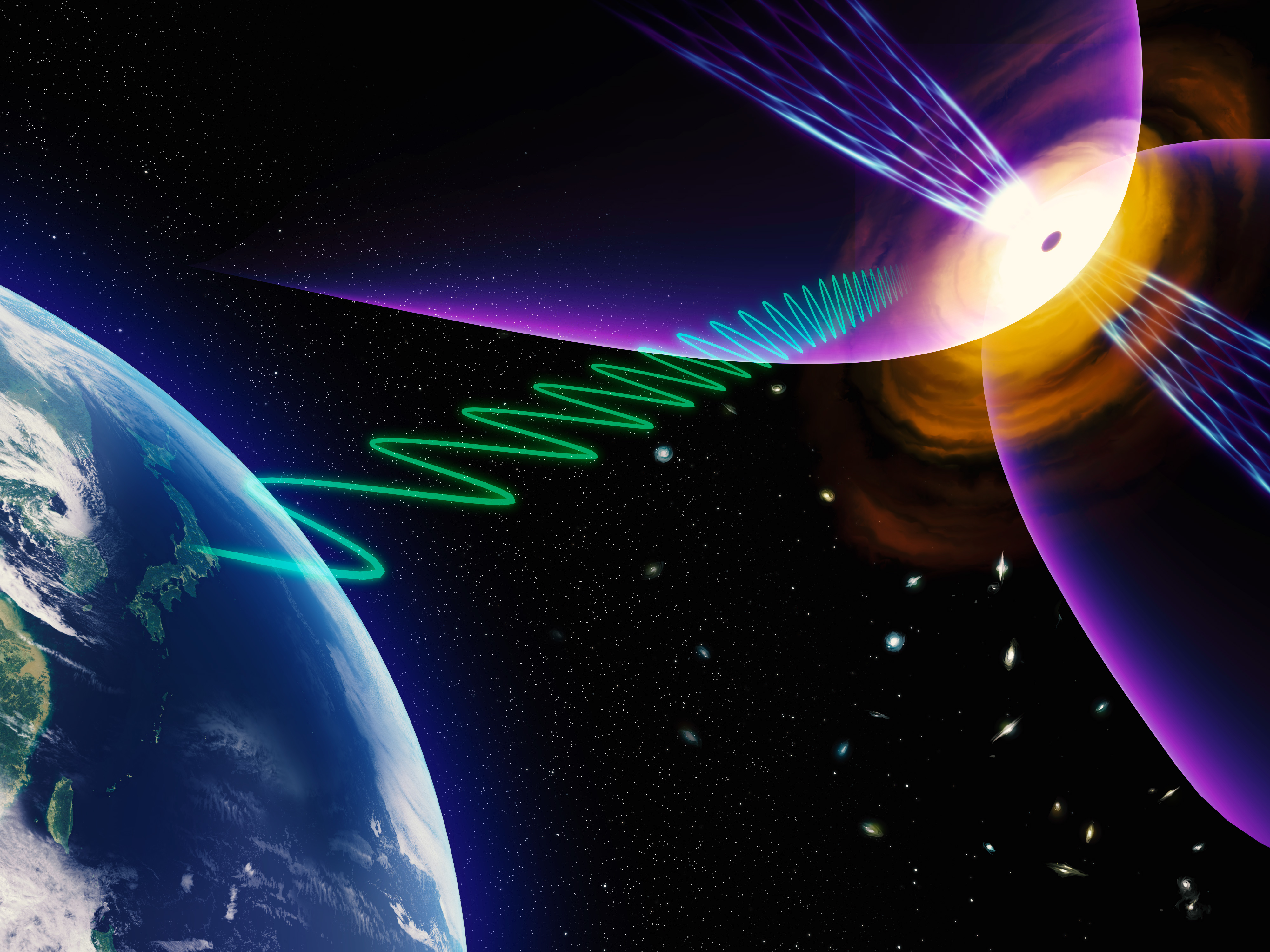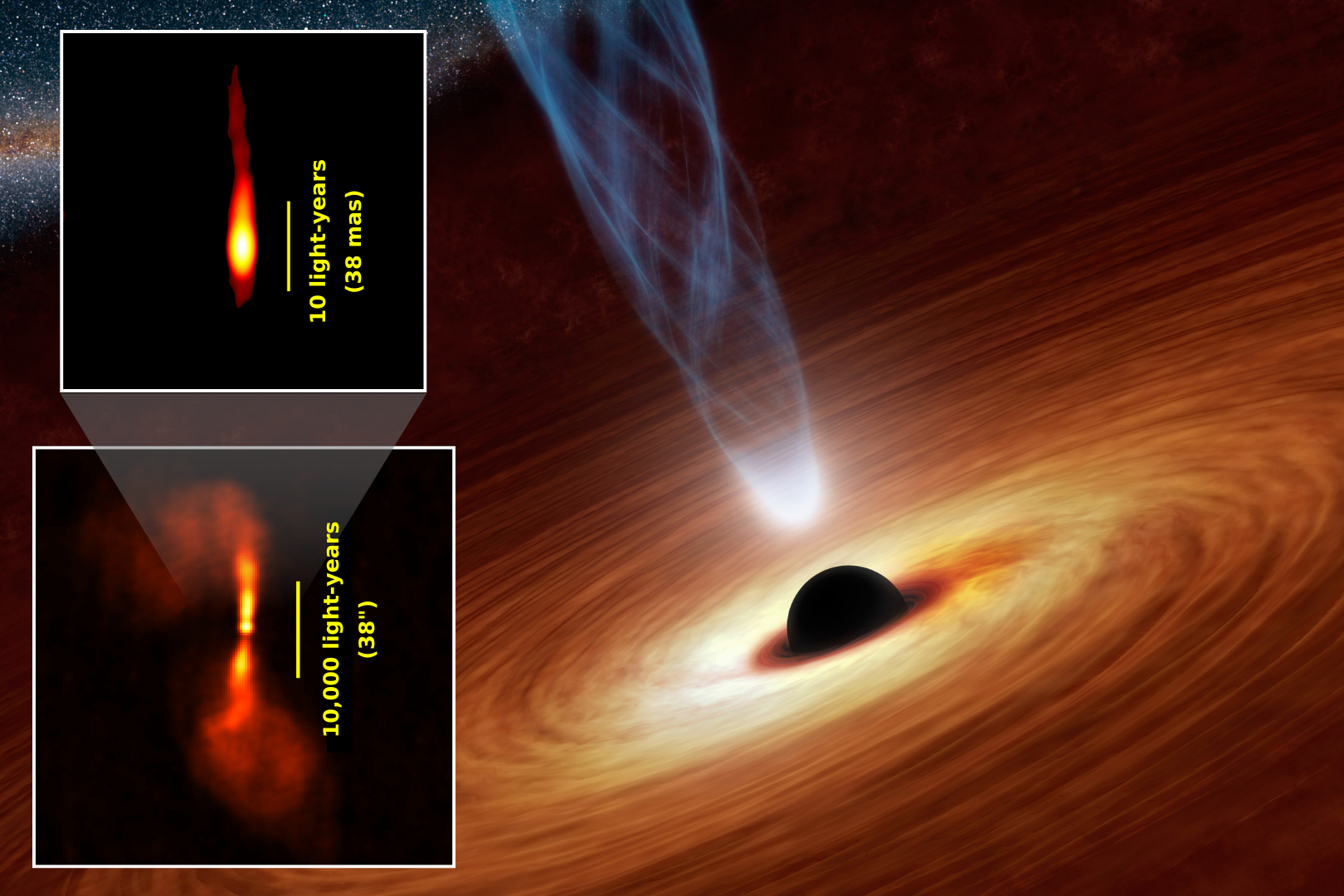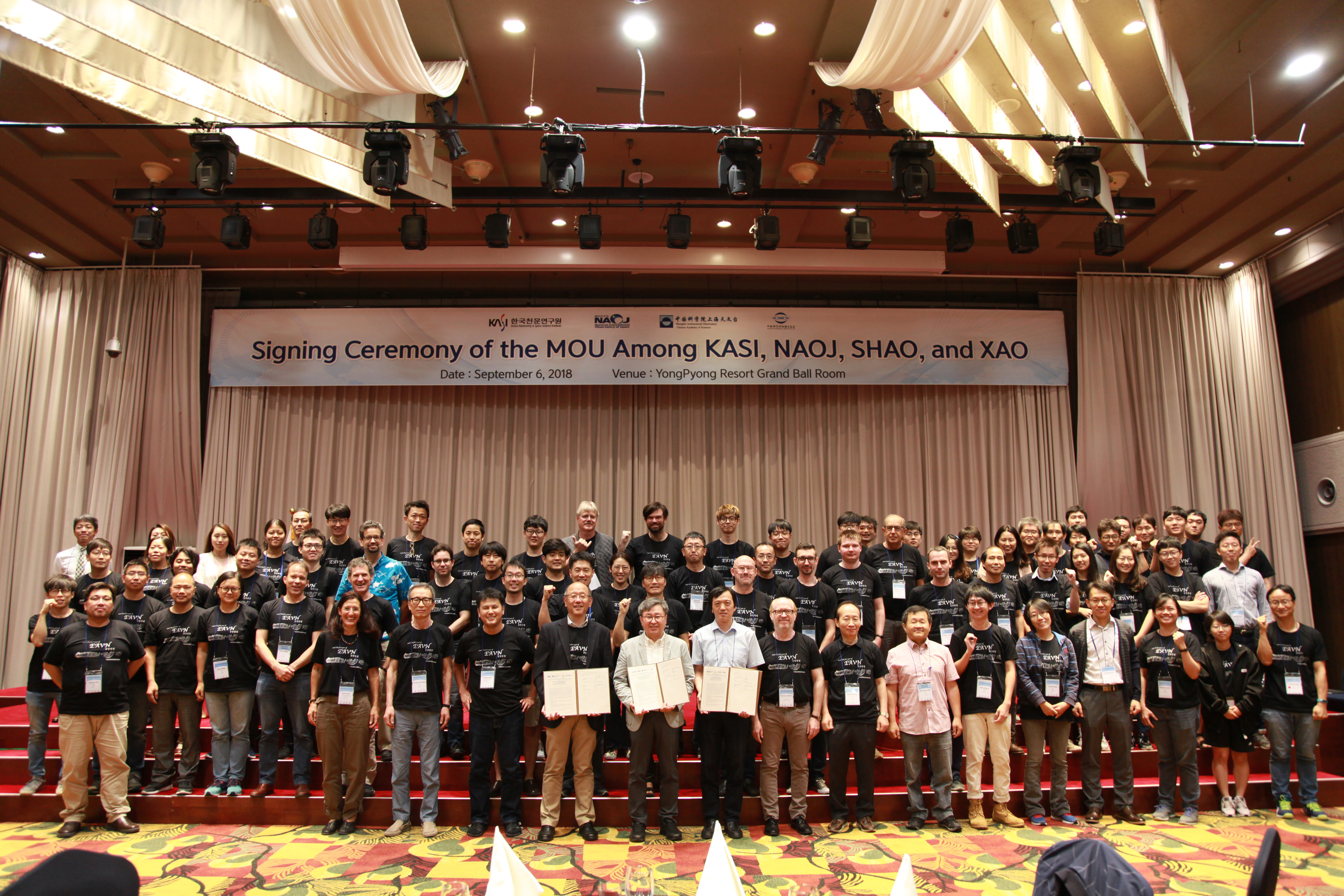An international research team including the Mizusawa VLBI Observatory of the National Astronomical Observatory of Japan (NAOJ), the University of Tokyo, and Nagoya City University has revealed for the first time that the jet from the supermassive black hole in the nearby galaxy M84 loses its narrow shape much closer to the black hole than in other galaxies. This discovery, made possible by high-precision observations with the Very Long Baseline Array (VLBA) in the United States, provides new clues for understanding how black hole jets evolve and why their shapes differ among galaxies.


